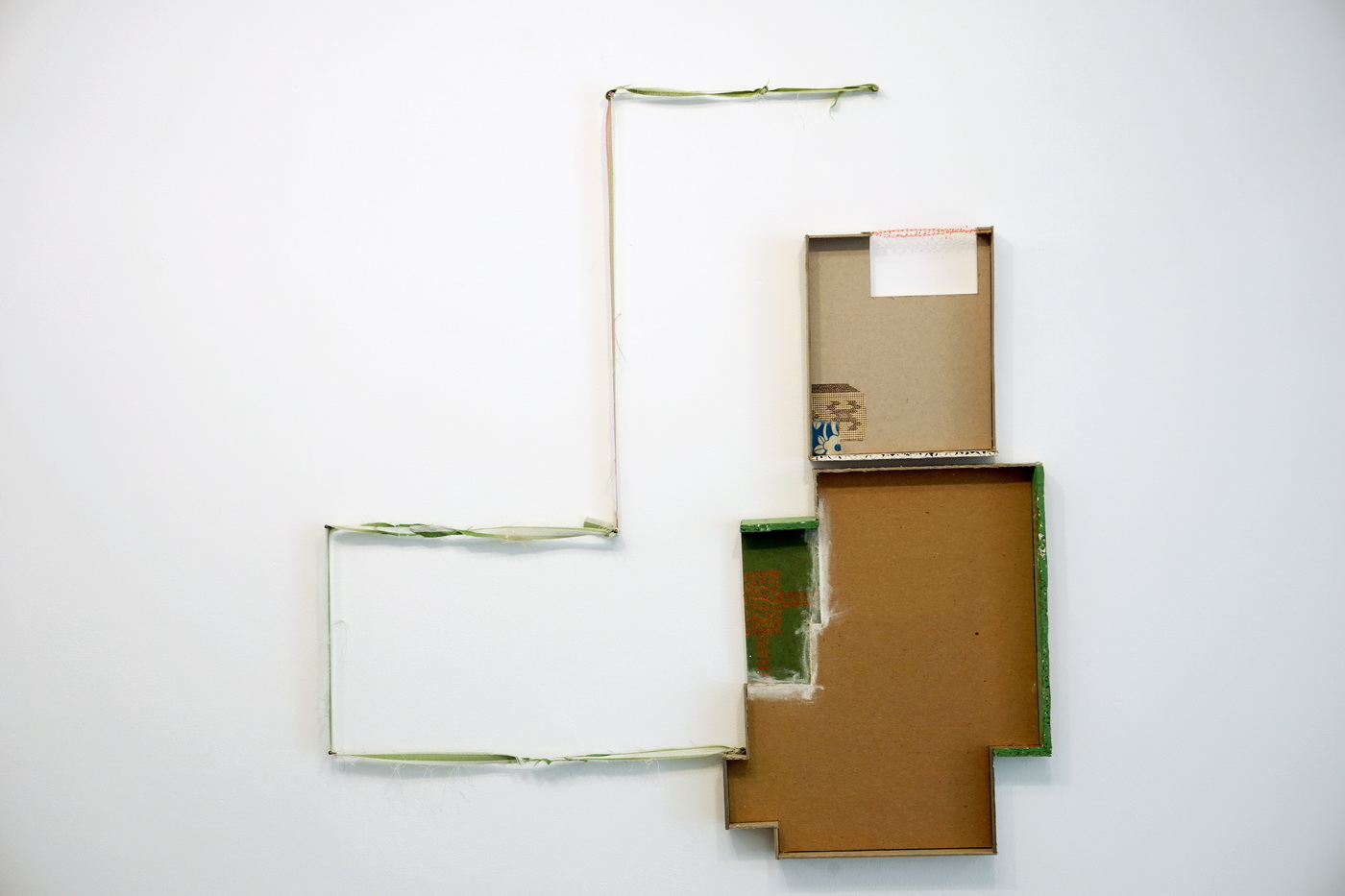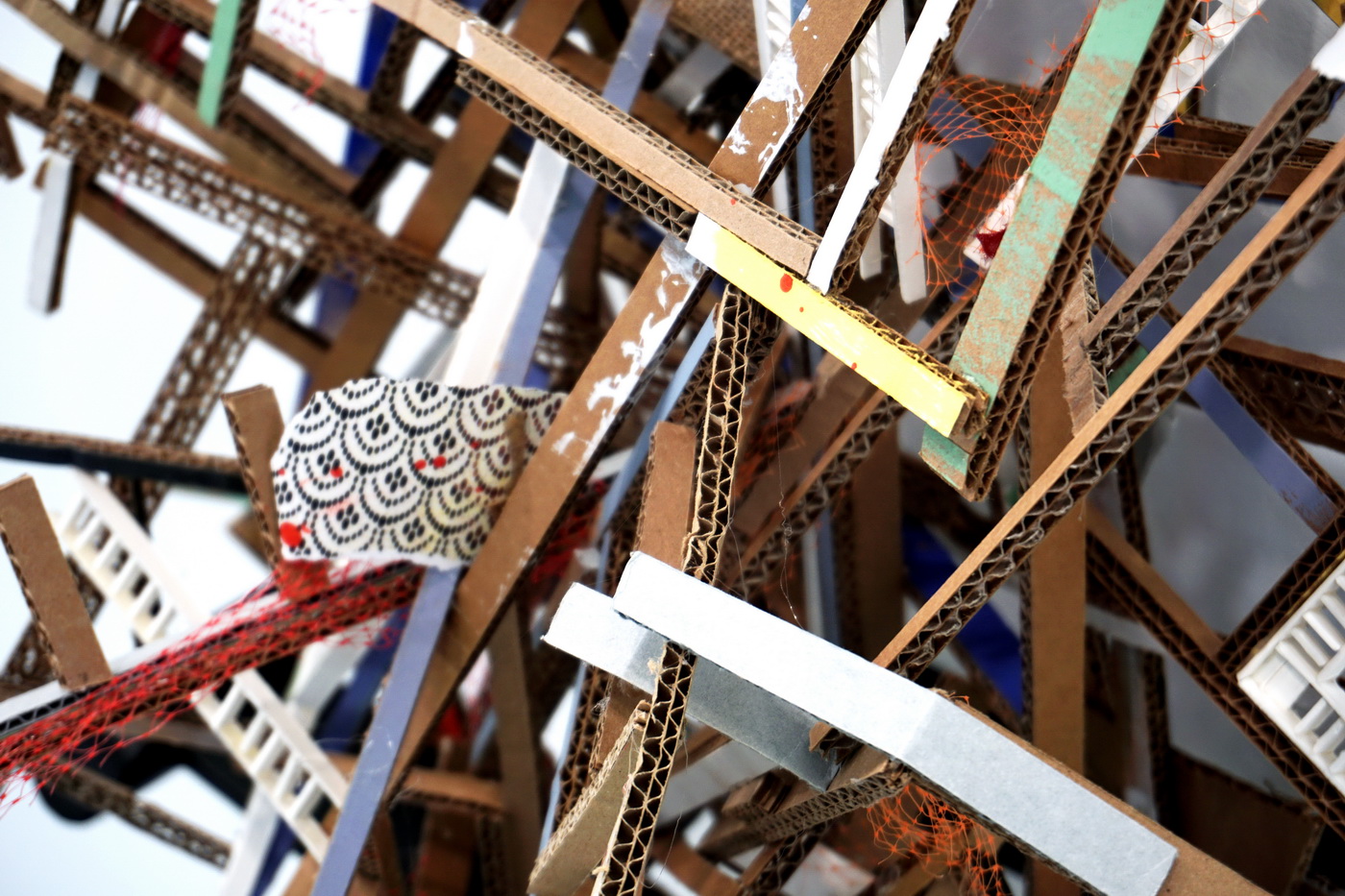Collateral or Premeditated
October 28th – December 29th 2017
INFO
Ana Tiscornia’s work is linked to her training in architecture but also tinted by her practice as a teacher and a curator. Ana perceives architectural space form the standpoint of its most primary stage: drawing. For architecture, drawing is not only the moment which holds all potential possibilities, but also a space for visualisation and for establishing relations in regards to the perception of the space. These two words, visualization and perception, are key to understand Ana Tiscornia’s work, particularly the pieces in Collateral or Premeditated, her exhibition at Nora Fisch Gallery.
First, visualization. A process linked to the notion of scale, to the ability to observe, measure, classify, translate, plan and synthesise shapes, sizes and spaces. I suggest that a certain group of Ana’s works are related to this process, they are more formal pieces which are preoccupied with the idea of the architectural scheme. Works such as Alternativa or Cerca (2017) are close to manners of visualisation: a drawing that circumscribes spaces from an aerial view, geometric shapes which represent places that we are familiar with, a bedroom, a kitchen.
Their difference with an architectural plan is the use of methods and materials which insinuate a darker reality. When looked up closely this plan becomes more a vestige than a footprint for a future project. The inclusion of papers with floral patterns, pieces of printed cloth, stripes, are references to a an aesthetic effort and a domesticity that point to the visual codes of modern architecture. As if an entire house would have been uprooted from its place. In other works it appears to be more than a house, a larger complex, a group pf homes, a neighbourhood. The work entitled Alternativa I seems to refer more to a community than a single particular space. This is when paradox is encountered, these plans have not been made to project a new space but to represent speculative spaces that seem to no longer exist.
The use of green lines is a another subtle gesture which is employed by the artist to refer to the temporal borders, called Green Lines, which delimitate territories during a ceasefire, historically related to conflicts in the Mediterranean of the Middle East. These are the kind of references to the real world that Ana seeks in order to provide meaning to the indeterminate and mobile spaces she portrays in her works. These references appear more clearly in the works Perímetro, Otras dos esquinas or Mosaico, where fragments of Persian carpets or polychrome mosaics announce the presence of certain cultural heritages which enter this artist’s language.
As part of this first grouping of works which are linked to the notion of visualisation there is a grid of filling cards. They seem to be a classification of small objects that could be remnants of domestic spaces, supposedly collected and classified by the artist. In this case Ana’s intentionality is more direct, they are “fake documents”, or an exercise in fictitious forensic architecture.
The second grouping of works, related to the notion of perception includes works as Silla, 2001 or Esas dos, 2017. Here the artist proposes a zone of dimensional confusion, which does not respond to the logic of bureaucratic classifying nor to pseudo scientific impulses, but to an ontological uncertainty, where viewer and proposed notion of space collapse when trying to meet. Stairways piled upon each other, interconnecting and creating trajectories through different planes, pillars, lines, columns that do not respond to any structural logic, yet they neither seem to be the result of a disaster, nor belong to the category of a remnant. In these works Ana’s efforts lead to the creation of altered realities that are characterised by plays of spaces, as in Esas Dos II, 2017, where two windows which appear to face different universes are connected by intricate structures. There are no specific sense of gravity or direction, all possible spaces coexist.
This impulse towards reconstructing, reviewing or creating complex realities springs from a political curiosity and a belief in the potential influences of space. Ana Tiscornia’s reconstructions and propositions present space not only as a place to live in but a constellation of objects able to store and distribute historical and cultural information, conceived as a relation between the vulnerability of the human body and the geo-political qualities of architecture.
The exhibition’s title, Collateral or Premeditated, offers two theories to explain the moment previous to the work —the instant of collapse. And both are equally harmful. If collapse is the result of a collateral action, it implies an extreme naiveté, if it is premeditated, an act of unbelievable meanness. It is precisely through this play of words that Ana offers us one of her most profound thoughts. And in order to do so she has created these beautiful, delicate, carefully made objects, which leave us thinking whether she has done this in a collateral or premeditated way.
Humberto Moro is Curator at the Museum of Art of SCAD in Savannah, Georgia, U.S. Previously he worked as Director of the Diéresis Collection in Guadalajara, Mexico; and as Assistant Curator at Fundación Jumex de Arte Contemporáneo.
PRESS
December 21st 2017
UN PUENTE CREATIVO ENTRE EL RIO DE LA PLATA Y ESTADOS UNIDOS, EN VILLA CRESPO.
Diego Gigena
go to article
















